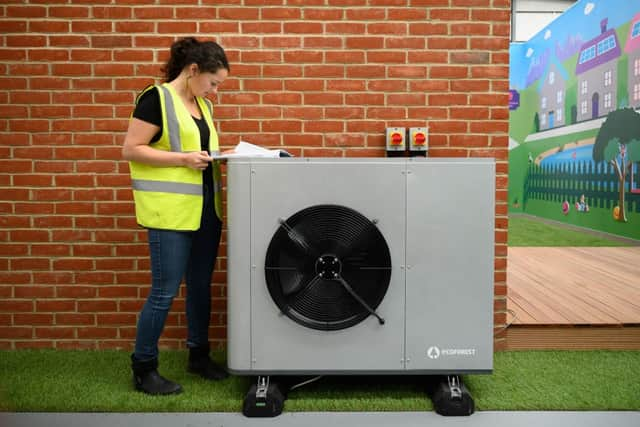Developers must slash carbon emissions from new homes by 2025 and here's how they will do it
They will contribute significantly in helping the industry to understand the delivery of the Government’s Future Homes Standard and provide real insight into how new sustainable housing can be delivered at scale.
The Future Homes Standard looks set to ensure that all new homes built from 2025 onwards produce 75-80 per cent less carbon emissions than those delivered under the old regulations.
Advertisement
Hide AdAdvertisement
Hide AdEarly results show this can be delivered at scale providing that the supply chain of key components can keep pace and skills training is available and is taken up.


Oliver Novakovic, Technical & Innovation Director at Barratt Developments, says that ditching gas fired heating and hot water systems in new-build homes and replacing them with electricity powered air source heat pumps will make the most significant difference in cutting carbon emissions.
The pumps draw outside air into a network of tubes filled with refrigerant gas which extract heat energy from the air outside. The gas passes through a compressor which increases the pressure and temperature causing it to change from a cold gas to a hot liquid. This then passes into a heat exchanger that heats water for radiators and taps.
At the moment, air source heat pumps do not work as well in older, less airtight homes but they are effective in new-build properties provided the pump specification is right and they are fitted correctly.
Advertisement
Hide AdAdvertisement
Hide AdThere is also concern that some small to medium size house builders won’t be able to invest time in learning how to use this technology which is why Barratt and the Future Homes Hub is staging training workshops sessions with SME builders.
Air source heat pumps are now mainstream in many other countries, including Scandinavia and France, and Oliver says: “They are not new but they are relatively new in this country, which is why training is important.”
Improvements in the fabric of new-build homes will also play a part in reducing carbon emissions.
Traditional construction materials will still be used by volume housebuilders, along with greater use of timber frames, and says Oliver: “Improving the air tightness is important for reducing the amount of energy you need but you can go too far with it. A home needs to breathe.
Advertisement
Hide AdAdvertisement
Hide Ad“We are making the walls wider and there will be more insulation in them and gaps in the properties will be substantially reduced but the homes won’t be completely sealed like a Passive House. If we go down that route then condensation and air quality would be a problem.”
Going down the Passive House route would also add to costs as mechanical heat and ventilation systems are needed and delivering at volume would be more difficult.
As for running costs for homeowners, while electricity is more expensive than gas, Barratt calculate that the cost savings brought by air source heat pumps will mean that the fuel price homeowners pay will remain roughly the same as when they used the fossil fuel. The main difference is that the environment will benefit greatly.
The other change will be the size of radiators which need to have a larger surface area for air source heating to work. They also take slightly longer to warm up.
Advertisement
Hide AdAdvertisement
Hide Ad“It’s important to say that air source heat pumps now are very different from those of ten years ago. They are much better and much quieter,” says Oliver.
Further advancement in new home building and use of different materials is coming and Barratt is part of this. Since January 2023, researchers have been testing The Future Home from Bellway and eHome2 from Barratt/Saint-Gobain. Both are three-bedroom homes, built using highly-performing, efficient materials.
Initial findings have shown that the prototype homes can face the extreme climates that we are experiencing now and are expected to see more frequently in the future.
The lessons learned from these homes are helping to develop a roadmap for housebuilders to build zero carbon new properties in the UK.
Advertisement
Hide AdAdvertisement
Hide AdProfessor Richard Fitton of Energy House 2.0 at the University of Salford, said: “Both houses performed well on our fabric testing with valuable lessons that can be used when designing and building homes. They provide information about the types of materials we need to create homes that lose only a very small amount of their heat.”